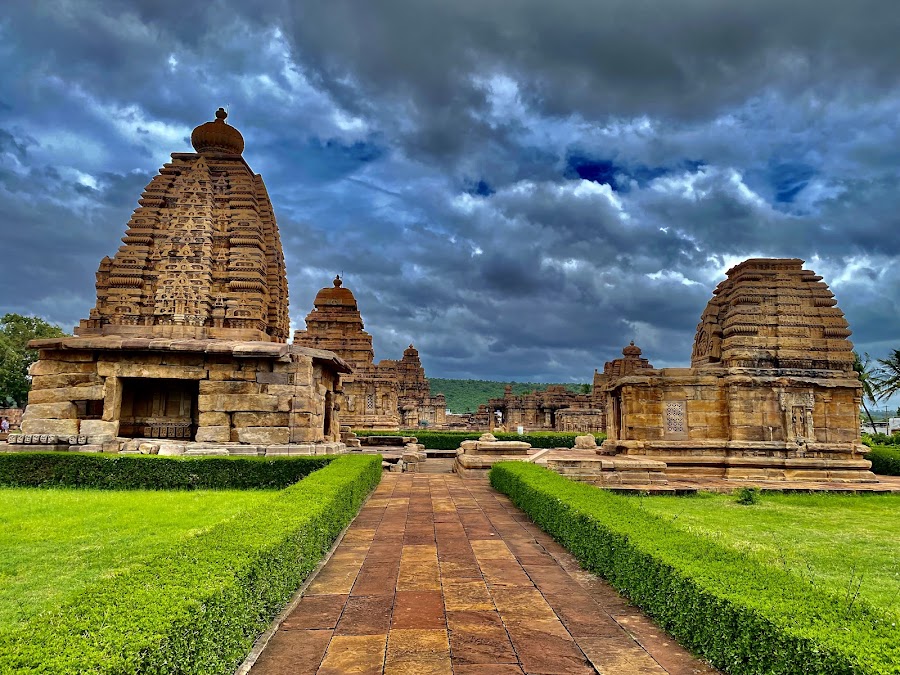
Temples of Pattadakal
Pattadakal, India
- Discover Jain sculptures in the Jain Narayana temple.
- Explore the Virupaksha Temple's intricate carvings.
- Learn about Chalukya dynasty history.
- Photograph the Mallikarjuna Temple's Dravidian architecture.
- Visit the Archaeological Museum nearby.
- Walk along the Malaprabha River bank.
Known for:
Description:
Pattadakallu, a UNESCO World Heritage Site, is a stunning complex of 8th-century Hindu and Jain temples located on the banks of the Malaprabha River. This site represents the high point of early Chalukya architecture, blending styles from both northern and southern India. Marvel at the Virupaksha Temple, the largest and most sophisticated, showcasing intricate carvings and a grand scale. Explore other temples like the Mallikarjuna Temple and the Galaganatha Temple, each with unique architectural features and sculptures depicting scenes from Hindu mythology. The serene atmosphere and historical significance make Pattadakallu a must-visit for history buffs and architecture enthusiasts.
History:
Pattadakallu served as a cultural center and royal sanctuary for the Chalukya dynasty in the 7th and 8th centuries. The Chalukyas, who ruled much of South India, used Pattadakallu for coronations and commemorative rituals. The temples here reflect the dynasty's ambition to create a unique architectural style by blending Dravidian (Southern) and Nagara (Northern) influences. The Virupaksha Temple, commissioned by Queen Lokamahadevi to commemorate her husband's victory over the Pallavas, is a prime example of this synthesis. After the Chalukya empire declined, Pattadakallu lost its political importance, but its temples remained a testament to their artistic and architectural prowess.